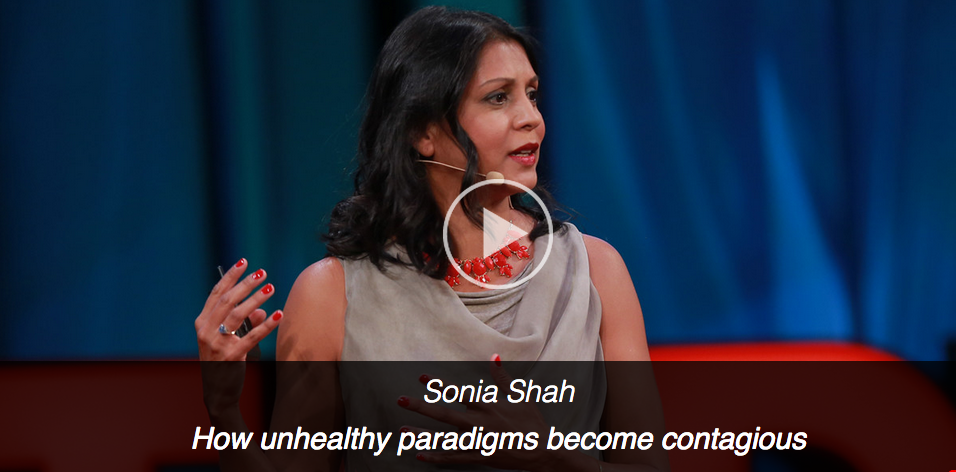From The Boston Globe, July 7, 2010
In ‘Fever,’ examining malaria’s ruthless history
By Dennis Rosen
Disease is usually a personal matter. When a person falls ill, he recovers, remains chronically ill, or succumbs, and his illness mostly affects him, and his immediate family and circle of friends. If a person is famous or powerful, her illness may affect more people, but generally in a brief and self-limited manner.
With a pandemic such as the bubonic plague in the 14th century, so many are affected that significant social upheaval and change can result, but once the disease has burned out, society quickly reaches a new equilibrium and moves on.
Rare are the diseases capable of shaping human activity over hundreds of millennia. Malaria is one such malady. In “The Fever: How Malaria Has Ruled Humankind for 500,000 Years,’’ Sonia Shah explores how it has shaped human history and examines the quest to find a cure and eradicate it.
This insightful book explores the human struggle with malaria not just from a scientific angle, which is cogently detailed without being overwhelming, but also from sociological and anthropological perspectives, which turn out to be the real strengths of this work.
Societies through the ages adapted to malaria and sometimes used it to their advantage. The citizens of ancient Rome, surrounded by swamps, were chronically exposed to malaria and so were able to build up some immunity. Thus, they proved less susceptible to its ravages than the soldiers of invading armies from the north who did not have this protection. By not draining the marshes, they established another layer of protection for their city. More than 2,000 years later the retreating German army employed the same logic to hinder advancing Allied forces, purposely flooding the Roman countryside in 1944 and triggering a malaria epidemic, which sickened more than 100,000 people.
In modern times, there have been many unsuccessful attempts to eradicate malaria. Those failures, Shah demonstrates, resulted from a lack of appreciation of the cultural and sociological mores and religious sensibilities of those assumed to be their main beneficiaries.
An example of this involves the mass spraying campaigns of the insecticide DDT to eradicate the mosquitoes responsible for the transmission of malaria. Despite what then seemed to be straightforward logic, unanticipated resistance was encountered. In Cambodia, Buddhist leaders objected to the mass extermination of insects from a religious perspective.
In Borneo, the spraying inadvertently led to an explosion in the rat population, and the spread of rat-borne diseases after the DDT poisoned cockroaches, which were eaten by cats, killing them off and leaving the rats without any natural predators. To fix this unintended consequence (and to try to prevent it from derailing the entire program), the World Health Organization found itself in the unique position of organizing air drops of cats. Because of these and other problems, cooperation of the local population with the spraying efforts plummeted, and the teams were unable to successfully complete their mission.
Even a recent campaign to distribute insecticide-impregnated mosquito nets for people to sleep under in malaria endemic areas has run into problems. When properly used, the nets can be effective in preventing the transmission of disease. However, some people are refusing to use them, fearful they somehow could be rendered infertile by doing so; others are using them but only to catch fish. In fact, one study from 2003 showed that fewer than 17 percent of Africans who had received the nets were actually making proper use of them for their children.
The practice of medicine is more than just the application of scientific knowledge. It is also an art and to achieve success doctors and other health workers must be attentive to the personal beliefs, cultural standards, societal and religious norms, emotional states, and educational backgrounds of those they are trying to help.
Shah is to be commended for focusing much of this well-written book on exactly these aspects of humankind’s interaction with malaria and how they have contributed to the lack of success in vanquishing it. Focusing on the science of medicine while ignoring its other components is akin to trying to ride a bicycle with only one wheel, and this is true not just with malaria, but also with AIDS, tuberculosis, and other diseases that afflict large numbers of people.
Dennis Rosen, M.D., a pediatric lung and sleep specialist at Children’s Hospital Boston, can be reached at dennis.rosen@childrens.harvard.edu.
© Copyright 2010 Globe Newspaper Company.













Leave a Reply